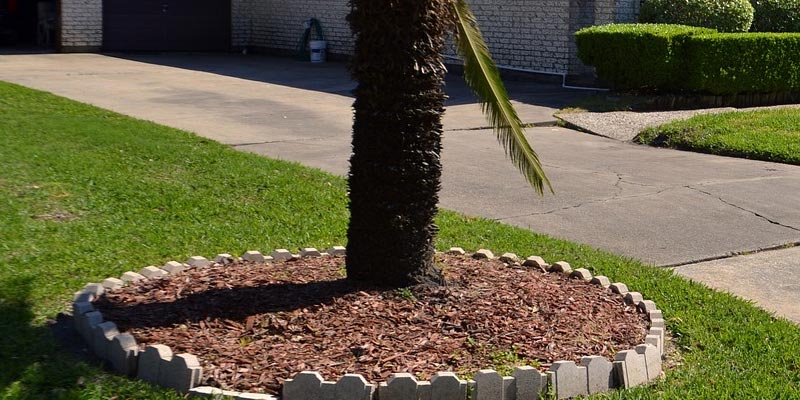After enduring an extended, sweltering summer; one naturally harbors a desire—almost instinctual—to plant a profusion of palm trees: symbols of respite in the face of relentless heat.
How can you protect your palm trees from frost? At what precise temperature does the threat to your palms begin; when do they perilously teeter on the brink of death due to cold exposure? Identifying a specific degree of chill that could be lethal is crucial: at which point will it result in my palm tree’s demise?
In this article, we assertively address these questions – and more.
Can Palm Tree Survive Frost?
Yes, the survival of a palm tree in frosty conditions indeed depends on its variety. Certain types effortlessly withstand cold weather; while others demand protection against the chill.
Two primary types of palms exist: tropical and subtropical. Tropical palms thrive exclusively in the warmest climates; however, subtropical ones can endure even cooler regions. Should you reside in a subtropical climate, your palm tree will likely resist frost—a contrasting scenario emerges if your residence lacks year-round warmth: protection from winter’s frigid temperatures may become necessary for your plant’s survival.
To ensure your palm tree’s safety throughout the winter months, adhere to these guidelines: supply ample light and water–though avoid overwatering; position it in an area with sufficient air circulation. This positioning prevents excessive cold when external temperatures plummet.
How Tolerant Are Palm Trees To Cold Weather
Palm trees demonstrate limited tolerance towards cold weather; indeed, they can endure freezing temperatures. However, the extent of damage that these tropical plants incur hinges significantly on how low the temperature plunges—the lower it drops, the more severe their resulting damage becomes.
Unlike most plants that retain their green hue—thanks to a unique adaptation found only in tropical palm trees: a protective layer of wax on their leaves, which prevents complete freezing even under protracted exposure to subzero temperatures; but provides no defense against killing frosts—the fronds of the palm tree perish as they adopt a brownish tint upon enduring excessive frost or other freeze damages.
How To Protect Your Palm Tree From Frost
Ensuring the survival of palm trees necessitates their protection from frost: these tropical and subtropical plants lack natural adaptation to cold temperatures. Consider the following methods–crafted meticulously for your use–to shield your palm tree from potential frost damage:
1. Covering: Prior to the advent of frost, encase the palm tree’s trunk with burlap or a frost cloth; this strategical move safeguards the tender tissue—rendering it insulated against severe cold.
Furthermore, in instances where a diminutive size characterizes your palm tree, you have room for an additional protective measure: ensure complete coverage of its top using either a blanket or another piece of frost cloth and secure it firmly at its base. Ensure that the cover touches the ground; this action is necessary to trap heat and, consequently, cultivate a microclimate around the tree.
2. Mulching: To ensure soil insulation and root protection from freezing temperatures, apply a thick layer of organic mulch—straw, wood chips, or shredded leaves being effective materials—at the base of your palm tree; this protective shield should extend several feet outward.
3. Heat Source: Consider this a strategically situated heat source that can deliver extra warmth and shield your palm tree. Think along the lines of outdoor-rated heat lamps or Christmas string lights for generating that much-needed heat; either wrap these around the trunk – being careful to avoid direct contact, or simply situate them in close proximity to the tree. Supplemental heat can elevate the temperature surrounding the palm; consequently, it prevents frost damage.
4. Watering: Protecting palm trees from frost necessitates proper watering to ensure that the tree is adequately hydrated prior to nights of frost. Moist soil–retaining heat better than dry soil–can stabilize the tree’s temperature more effectively. Be cautious; do not overwater—excessively wet soil can precipitate root rot.
5. Wind Protection: Strong winds can intensify frost’s effect on palm trees: consider constructing a windbreak. Using materials such as burlap, or even erecting a temporary fence or barrier around the tree, could serve this purpose—this strategy assists in shielding the palm from bone-chilling winds and diminishing the risk of frost damage.
6. Pruning: Before winter arrives, engage in the task of pruning dead or damaged fronds from the palm tree; doing so reduces the surface area exposed to cold temperatures. By minimizing unnecessary foliage, we provide an opportunity for the tree: it can direct resources toward promoting healthier growth–a testament to nature’s remarkable resilience and adaptability.
7. Microclimate Manipulation: Protecting a palm tree from frost can be achieved by creating a microclimate around it: cold-hardy shrubs could be planted or large rocks and boulders placed nearby to provide added insulation; these can block the effects of strong, chilling winds. These elements—acting as natural barriers—not only trap heat but also inaugurate an environment more favorable for the growth of the palm tree.
What Temperatures Will Kill Palm Tree?
In understanding frost tolerance, one must realize the necessity of shielding palm trees from temperatures that dip below 32 degrees F. Temperatures plunging beneath 25 degrees F might be fatal to these trees; further dips under 20 degrees F—almost certainly lethal—even for the hardiest of palms.
To put it succinctly, should the temperature plummet below freezing for an extended period–perhaps over a couple of hours–you ought to shield your palms indoors: this is instrumental in ensuring their security.
Conclusion
Not only are palm trees aesthetically pleasing, but they also enhance any garden; however, their care—specifically regarding winter and frost—is essential. To ensure the survival of your palm tree through freezing temperatures without damage, you must understand how to safeguard them: this involves shielding the roots and maintaining a sufficient water supply year-round.



